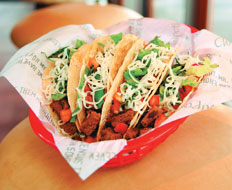
When the National Restaurant Association (NRA) unveiled the results of its “What’s Hot in 2012” chef survey in December, few were surprised that locally sourced meats and seafood secured the No. 1 spot on the list of top 10 menu trends for this year. Or that the term local showed up in three other trends on the list.
Even as locally sourced foods find their way to more menu items, the small family farms supplying the foods are disappearing in droves.
According to the U.S. Department of Agriculture (USDA), the number of U.S. farms has fallen almost 40 percent in the last 50 years, and small farms now account for just 16 percent of the food produced in the U.S.
Stopping farms’ downward spiral could be in the best interests of the restaurant industry. More small farms help keep local foods accessible and cheap for operators. The farms also offer more jobs to local communities and purchase more goods from local businesses than industrial foodservice providers, thereby supporting local economies, according to the nonprofit organization Sustainable Table.
Some quick-serve operators are already on board in the fight to preserve the farms that have been the nation’s agriculture backbone for generations.
Chipotle, with its “Food with Integrity” slogan, is the highest profile company spearheading the pro-farm movement. The company’s annual Boorito fundraiser at Halloween supports Farm Aid and the Chipotle Cultivate Foundation, which lends a hand to family farming operations. In October, the company threw a festival in Chicago, “Cultivate Chicago,” that raised awareness for small farms. And the Chipotle Cultivate Foundation earned media attention late last year with two short films that spotlighted the struggles of small-farm operators.
“What we have seen over the years is certainly a huge consolidation among family farms,” says Chris Arnold, director of communications for Chipotle Mexican Grill. He says industrial farming undercuts small farms and leads to 300 families leaving their farms every week.
Not every concept can support farms like Chipotle can, but experts say there are easy ways to get started.
For starters, operators can streamline their supply chain to limit the distance ingredients travel to get to stores. Complex farm-to-market supply chains reap profits for large food processors, but prove detrimental to small-farm operators. A 2010 USDA study, “Comparing the Structure, Size, and Performance of Local and Mainstream Food Supply Chains,” concludes that shorter supply chains increase a family farmer’s income.
Further, operators can choose to make their menus more flexible to accommodate the seasonal ingredients local farmers have to offer.
Tre’za, a new gourmet pizza, salad, and gelato fast casual based in Atlanta, uses locally sourced ingredients throughout its menu. “We’ll create flavors based on what happens to be fresh in the market at that particular time of the year,” says Daniel Rothfeld, CEO of Tre’za.
Menu variability is an asset, Rothfeld says, as it offers a more exciting culinary experience.
“Because each restaurant has local relationships with different farmers, the specific food item might be a little different, so there’s variability in taste and that, in our minds, is actually a plus,” he says.
While variety may be an advantage to sourcing from family farms, there are inherent problems with using smaller suppliers.
“The challenge for [quick serves] is simply to find farms that are able to produce the quantity that they need on a consistent basis,” says Chris Hunt, senior policy advisor for Sustainable Table, which sponsors the website EatWellGuide.org to help consumers locate farms, markets, and restaurants that provide locally sourced, sustainable, or organic food.
Indeed, finding farms is a challenge for an industry that is accustomed to offering a lot of food, especially at a low price. But Rothfeld says operators shouldn’t be scared away by the higher price points that are sometimes associated with sourcing from small farms.
“If restaurants are looking at it in the sense of, ‘Oh my gosh, you have to price within this particular range,’ then they’re not taking into consideration that the consumer might pay more for their product,” he says. “That will have influence, either positively or negatively, back to the farming community as well.”
Customers will pay more for quality food, Chipotle’s Arnold says. Even though locally grown produce costs operators more, he says, transport costs are less, “and those two things seem to be about a wash.”
James T. Strobino is senior vice president of new concept development for Uno Restaurant Holdings Corp., which sources from local farmers around the country for its more than 150 stores. He recommends finding a secondary local supplier to help handle a quick serve’s volume.
“It’s a little more challenging for the quick serves, because with some of these units, it’s all about, ‘Can you maintain your price point, and can you ease it in?’” he says.
Arnold recommends operators start small, then grow their small-farm purchasing programs. Chipotle transitioned from purchasing 10 percent to 15 percent of seasonally available produce from farms to 75 percent in some markets. Farmer’s markets are easing procurement barriers, he says.
“We’re seeing some really encouraging trends right now when you look at the proliferation of farmer’s markets,” Arnold says. “The number has grown considerably over the last decade.”
Strobino says that while casual and fine dining are easier industries to go “farm to table,” it’s not impossible for the quick-serve industry to go that direction.
“It can be done,” he says. “That’s our approach. It’s an incremental impact, but to me, you have to start somewhere.”
Hunt says quick serves worried about the investment in small farms should take note of the success Chipotle has had with its “Food with Integrity” campaign.
“Someone like Chipotle can come in and [source from small farms] on a national level, because I know it’s something demanded by consumers that customers will respond to,” he says.












